OMNI presents its two-person exhibition “Always Change, Never Change” this July. The collaboration born between graffiti artist CHITO and Parisian artist Wu Yué merges their worlds, finding continuity in their artistic style whilst appreciating their individuality.

The OMNI gallery is the site for Seattle-born artist CHITO and Beijing-born artist, Wu Yué’s London debut. “Always Change, Never Change” is running from July 7 to August 6.
Reinvention
A seamless union between CHITO and Wu Yué comes through in their playful mass appeal and their ability to push the boundaries.
The appeal comes from both artists’ success in the world of fashion collaboration. Just recently, CHITO tagged the walls of an abandoned swimming pool for Matthew Williams brand, ALYX 9SM SS23 show. In “Always Change, Never Change”, CHITO’s abstract motifs and cartoon characters now find themselves airbrushed onto canvas and reinvented into an inventive assortment of media including stretched barbed wire and wall-mounted sculptures.
Similarly, Wu Yué’s pop surrealist figures receive a commission from the likes of Commes de Garçons and Nike. Now, they find their place on black slews of fabric and on the hood of a BMW.
Pups, Clowns, and Devils
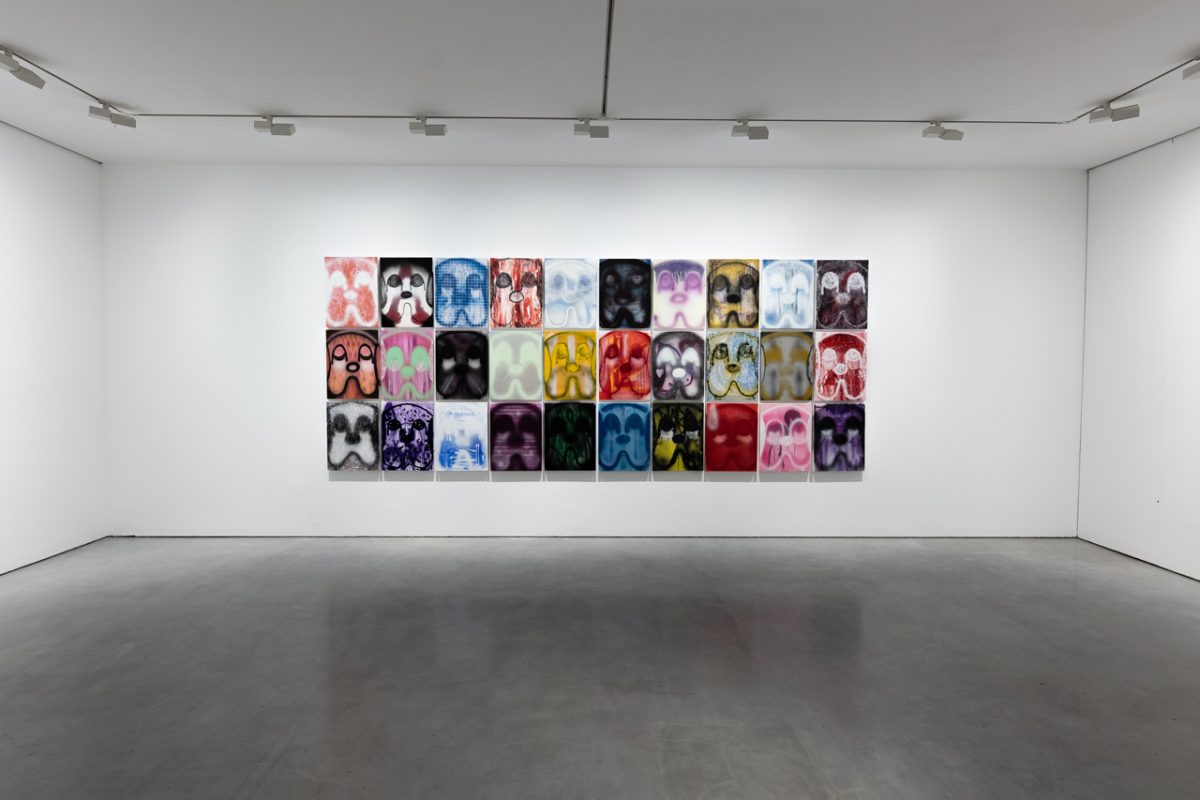
In “Always Change, Never Change”, the series is set up in an expansive showplace. The art is profound and eager, leading a life beyond the canvas.
“Distant Pups” is a collective piece spanning a wall in a row of 3×10 on a custom-made canvas. CHITO’s idiosyncratic bulldog is sprayed in a myriad of colours, permeating a retro impression. In ways, it reminds me slightly of Andy Warhol’s portraits of Marilyn Monroe.
Additionally, the CHITO Pup receives reimagination once more, debuting as a free-standing sculpture. It’s a concrete moulding, guarding the OMNI space. The roguish sculpture together with the 2D surrounds brings the art to life. And this facilitates a fascinating seduction alongside an unfriendly hostility.
Mad Sentiments
One piece, ‘nothin2me”, manifests this harsh undertone clearly. CHITO’s frowning clown face with a menacing grinning devil above it is airbrushed atop a slashed backdrop of angry reds and yellows. This is further layered atop a pattern of a brick wall. The words ‘nothin2me’ are scratched into the painting, clearly connoting angry sentiments.
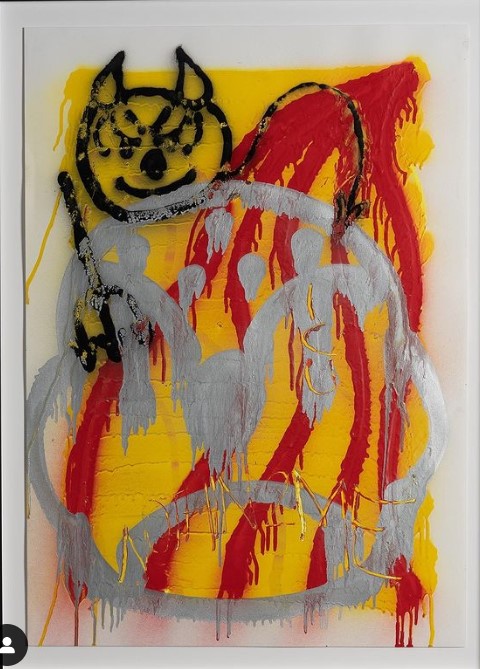
Other pieces, like “Rainy Pups” sees a fading version of CHITO’s cartoon dog. It’s grainy and washed-out look implies an almost melancholy tenor. Gold paint functions like rain in one iteration, spilling from the sky – the top of the canvas.
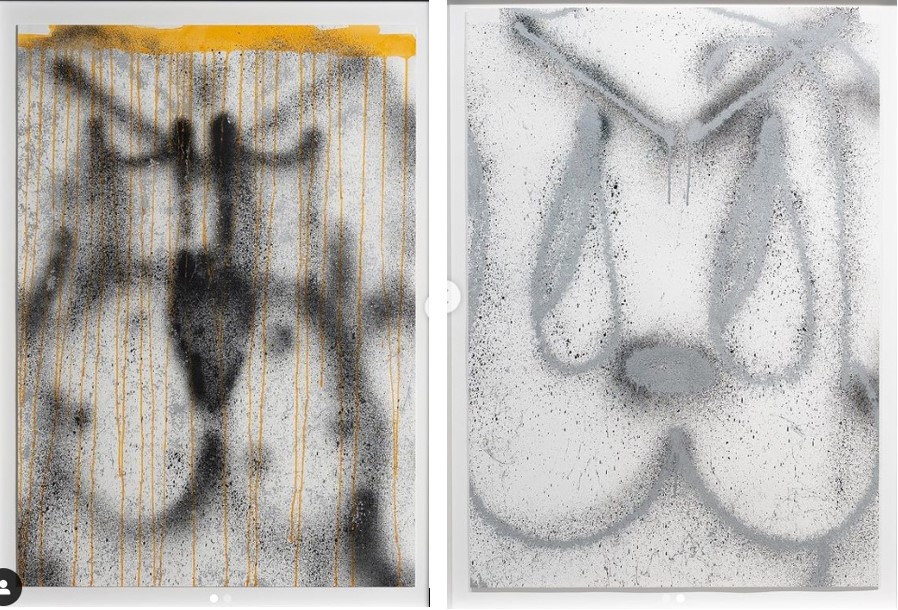
It seems that CHITO’s universe of cartoon dogs, people and other beings bespeaks to a rebellious juvenescence. These characters of CHITO’s world live by no one’s rules and act of their own accord.
CHITO’s style is shows heavy influence by the Seattle graf scene. Therefore, it gives the world a taste of retro, contemporary art. CHITO’s characteristic motifs and cartoons thus destigmatise the sub-culture; proving it to be a valued art form in which OMNI appreciates. OMNI says,
“In its essence, although his work is raw and unrestrained, it’s fine art and should be presented as such. The space and the work made sense.”
From the use of traditional spray paint cans which tag the streets of Seattle, evolving to the studio with an airbrush. It’s specifically CHITO’s move to the realm of fashion that inspires me most, proving that art is multifaceted and can look like anything.
When asked if excited to be shown at OMNI, CHITO replies:
“[I’m] excited to show with OMNI because they’re embracing the new generation.
“Then came the car”
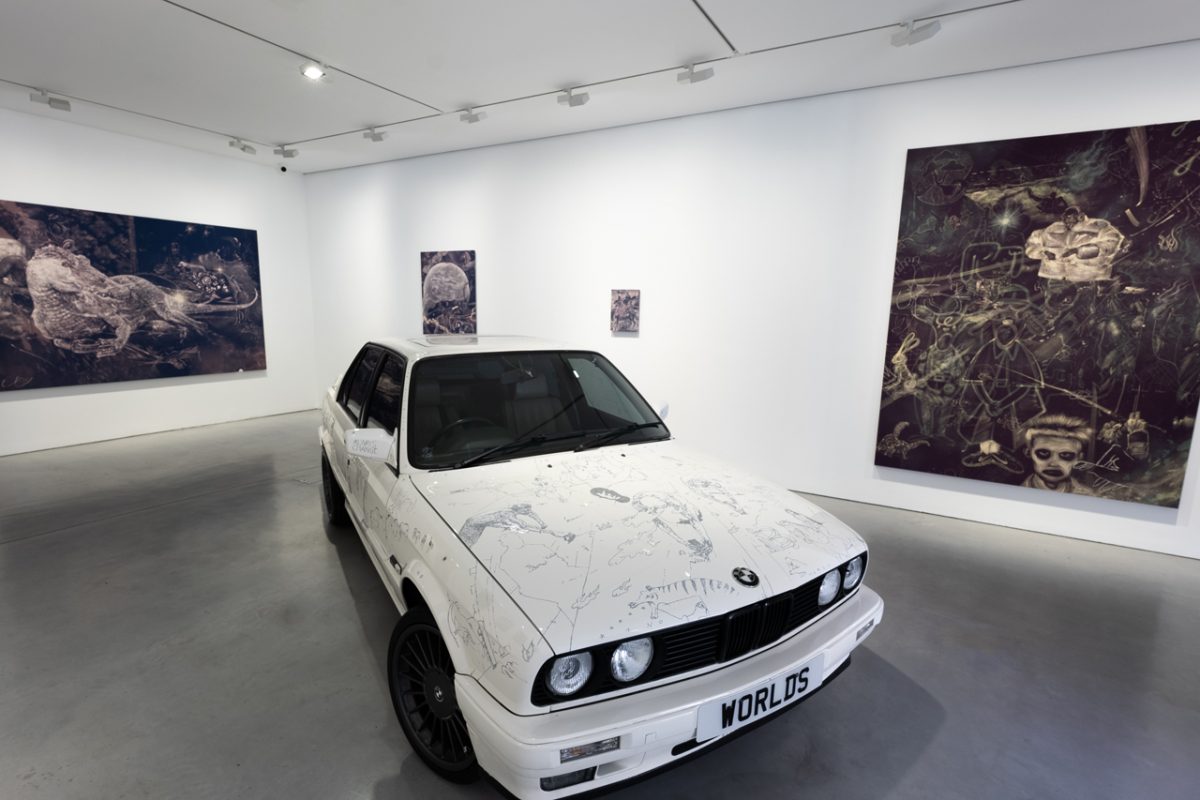
Always Change, Never Change proves to be an ambitious installation. Wu Yué carves and engraves his designs onto the surface of a white BMW E30. It sits front and centre of the exhibition.
When talking about the BMW to HYPEBEAST, OMNI says:
“We bought one with no idea how it was going to work in the space. I believe these situations can be incredible if you just give the artists the space to create unhindered.”
His preoccupation with the riots of Socialist France juxtapose the context of Communist China. The artist is struck by the imagery of burning vehicles – products of protests, of emotion, leaving a deep-seated inflection on Wu’s childhood.
The characters and scenes displayed on the car, synthesise with the whole of the exhibition author a critique. Wu Yué interrogates an age of immense social, political and cultural injustice; submerged within societal structures and practices. Stemming from his experience in both Western and Eastern cultures, Wu traverses the past whilst reimagining the future. Wu explains,
“I try to sample all types of images to tell stories and create connections […] We are complex beings made of very different things and influences, and using irreversible techniques makes the work a recording of a moment through an ensemble of strokes.”
Innovation and Removal
OMNI describes Wu Yué’s artistic practice as an act of redaction, of removal. Exploring figuration through innovative bleaching of the canvas. This replacement of paint leads to the creation of scenes that “incorporate the element of chance”.
Whilst brushstrokes strip the canvas of its original pigment, the bleach allows it new chemical permanence with each brushstroke. Its irreversibility means these moments will never be transient.

Wu’s approach amalgamates “pop culture iconography with surrealist and beguiling forms”. He explores a range of media including etching, carvings, animation and illustration.
The artist often depicts famous characters, iconic monuments and references. And his work often includes his obsession with dinosaurs – dating back to his youth.

An impressive manifestation of this sentiment is the large 266cm X 178cm collagist-style piece titled “Olympia”. This bleach on canvas piece work offers a monstrous yet delicately detailed Baryonyx dinosaur atop the backdrop of Edward Manet’s painting, “Olympia”. Subtler depictions of a reclining nude woman (Olympia) with a servant bringing flowers. This finds pairing with the lyrics, “Olivia break the chain” from The Whispers, setting the intonation of his work.
In essence, similarly to CHITO, Wu Yue’s art purposely lacks refinement. He inherits this method from his multidimensional upbringing and life experience.
Just The Beginning
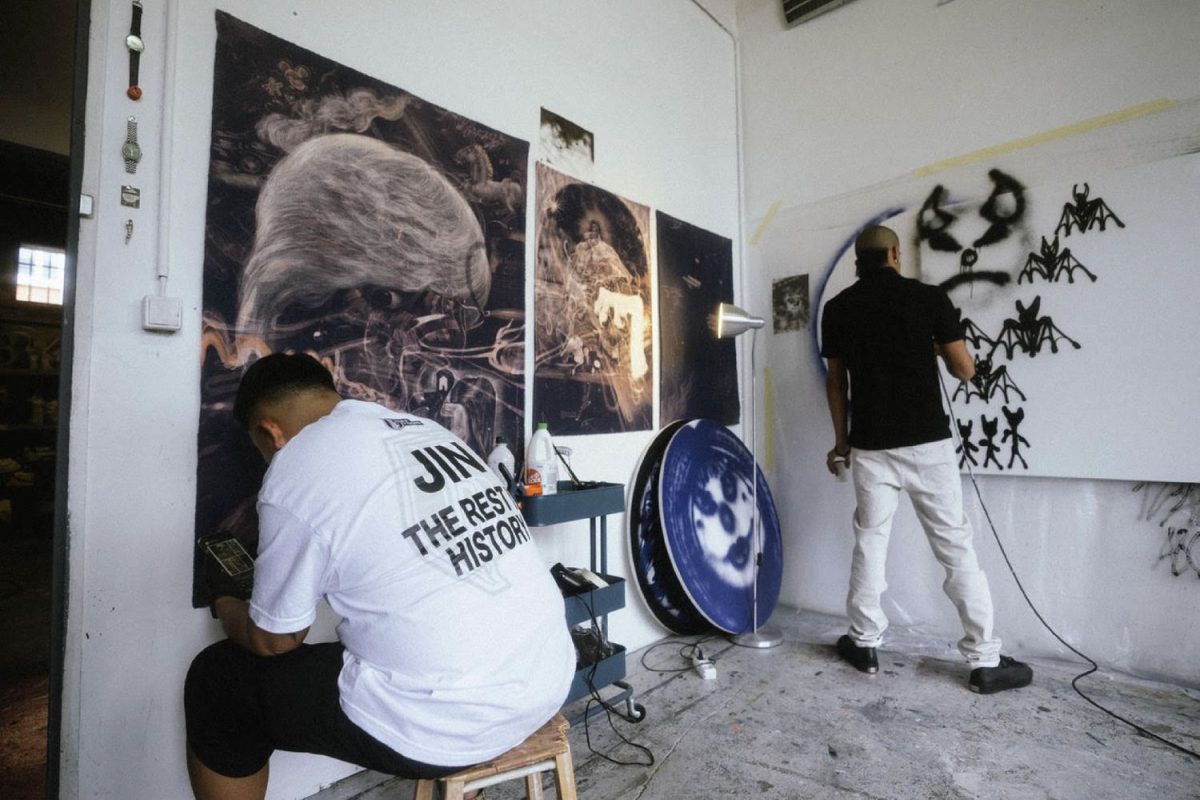
Always Change, Never Change is proving to be a prosperous alliance for both artists.
“I learned you just gotta do it […] I’m usually more of an overthinking guy. CHITO’s work ethic and clear vision is very inspiring.” Said Wu.
As far as CHITO’s can see, this is just the beginning, “we’re not stopping anytime soon.”
Subscribe to FIB’s Weekly Breaking News Report for your weekly dose of music, fashion and pop culture news!







